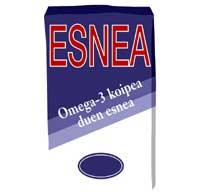Walnuts
2003/02/01 Lorenzo, Arantza | Uranga, Ane Miren Iturria: Elhuyar aldizkaria
This dry fruit, known by the botanical name of Juglans regia, has been known and consumed since prehistory: the Greeks called it kara (head), for its resemblance to the head, and the Romans considered it a food of God. Therefore, it has long been considered as healthy food.
Walnut has many origins: East Asia, Southeast Europe, North and South America, among others. Walnut is part of the group of fatty nuts, along with almonds, gold, peanuts and pine nuts. It has a lot of energy, 642 kcal per 100 g, so it is more appropriate as a second dish than to eat between hours, to complete the meal.

Like all nuts, walnut fat is mainly polyunsaturated and is especially rich in linoleic acid. In addition, walnut is the only dried fruit that contains unsaturated alpha linolenic fatty acid and linoleic fatty acid is essential for the human body. In fact, the fats in our diet can be precursors of another fat, that is, certain fatty acids can form others, but linoleic acid and linolenic cannot be generated in this way. That's why we need to introduce these acids through food, and walnut is a good choice.
On the other hand, walnut is famous because it helps to reduce blood cholesterol levels: on the one hand, despite the abundance of fats, it does not have cholesterol and on the other, the body makes it difficult to produce cholesterol. In turn, walnut also affects other blood fats, decreasing triglyceride levels, among others.
In addition to fat, walnut has other ingredients worth mentioning. Walnut is rich in carbohydrates oligosaccharides and fiber (6 g of fiber per 100 g). Proteins are also of quite quality, although they are of vegetable origin. Binding with cereals is obtained good quality proteins, so walnut and bread, for example, form a very suitable mixture.
On the other hand, walnut offers a wide variety of regulatory substances: vitamins, group B thiamine, riboflavin, niacin, folic acid, pyridoxine and vitamin E. In mineral salts, on the other hand, it is very rich in potassium and phosphorus and, although to a lesser extent, it contains iron, magnesium, calcium, zinc, copper, manganese and selenium.
Walnut, in addition to nutrients, contains a wide variety of phytochemical components, those of the phytosterol type.
Thanks to all of them, walnut is a very healthy food, as long as we eat raw. To get all the benefits, it is recommended to eat at least once a week and a maximum of five times a week, about 25 g per meal (skin-free weight, clear).
Omega-3 fatty acids

Omega-3 fatty acids are becoming more and more known, but what kind of fats are they? For example, fish has a high content in this type of fat: more than 5% of blue fish are Omega-3 fatty acids.
In nature we can find many types of fatty acids: the separation is conditioned by the length of the chain of acid fat, the existence or not of double bonds and the location of the double bond. Omega-3 fatty acids are long-chain acids with more than two double carbon bonds. We will specify more: the first double link is in the third carbon and hence the number three. The most abundant omega-3 fatty acids are eicosapentaenoic acid (EPA, consisting of chains of 20 carbon atoms and five double bonds) and docosahexoenoic acid (DHA, consisting of chains of 22 carbon atoms and six double bonds). But the most important thing for the body is linolenic acid, necessary for the brain and the functioning of the central nervous system.
In nature we find mainly in blue fish the omega-3 fatty acids: in anchovy, sardine and salmon, as well as eggs with omega 3 fat (chickens feed with feed containing this type of fat). But not all animal foods have this type of fat. In products of vegetable origin, nuts are the ones that contain the most omega 3 fat. In addition, germ and certain oils (evening primrose and rapeseed) also contain this type of fat. However, more and more foods containing this type of fat are seen in stores: milk, margarine, cookies... But how do you get these products? Milk, for example, contains saturated fats and its high consumption is not beneficial for health, so saturated fats are eliminated and unsaturated fats from fish are added. So you get milk with omega-3 fat (there is 0.08 g of omega-3 in 100 ml of milk).
Why are omega-3 fatty acids good for health?
- Influence triglyceride levels in blood and help prevent heart and blood circulation problems. At first it was considered that they also influenced blood cholesterol levels, but recent studies have made it clear that this does not happen. Daily intake of fat from 3-7 g of fish for two to three weeks reduces blood triglyceride levels by 25-30%.
- It is very good against inflammation, especially for people with rheumatoid arthritis and ulcerative colitis. Their daily consumption reduces the symptoms of these diseases.

However, omega-3 fatty acids are not good only for adults, they are fundamental for the proper development of the baby's brain at birth. Therefore, it is convenient for pregnant women and infants to eat blue fish two or three times a week. In this sense, the United States is studying the possibility of adding omega-3 fatty acids to milk for newborn children so that the child's brain develops well.
According to recent studies, low consumption of omega-3 fatty acids generates learning problems, visual alterations and polydipsia. No doubt, in the future new research on this subject will be carried out.

Gai honi buruzko eduki gehiago
Elhuyarrek garatutako teknologia





